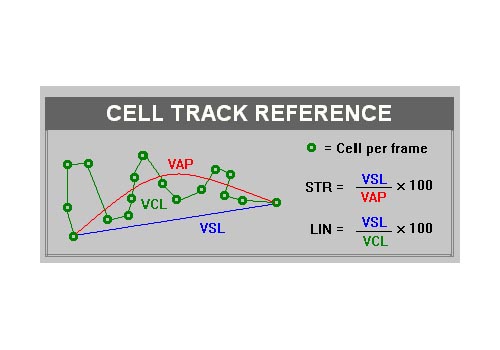By Paul Loomis
The most commonly used measure of semen quality is sperm motility, specifically ‘progressive motility’. But what exactly does that mean and how is it determined? The minimum post-thaw ‘progressive motility’ generally recommended for commercial distribution of frozen semen is 30% to 35%.
This article will address some of the factors that can affect the assessment of sperm motility as well as the various problems associated with techniques used for determining ‘progressive motility’.
The problem with subjective motility
One of the main problems with using motility as the basis for determining the expected or even guaranteed quality of frozen semen is the variability between technicians or laboratories in subjective estimates of sperm motility. Determining progressive motility subjectively involves visually scanning several fields of motile sperm under a microscope and estimating the percentage of the population that are moving in a progressive fashion. Experienced technicians all trained in a single laboratory can become very consistent between one another in their estimations of progressive motility. However, when two technicians from different laboratories assess the same sample there can be tremendous variability in the reported values.
When a mare owner purchases frozen semen they are expecting that the quality will meet minimum standards after thawing. They expect that analysis of the semen at the time of breeding will confirm the quality that was reported by the seller or the laboratory that froze the semen. However, if those assessments are made subjectively, either by the freezing lab or the veterinarian performing the AI, then they may be worlds apart in their estimation of progressive motility. This can lead to problems between stallion owners and mare owners or frozen semen brokers and the purchasers of those doses of semen.
Technology to the rescue
Several years ago when I was working with engineers and programmers at Hamilton-Thorn Research on development of computer assisted sperm motility analyzer technology (CASA), I was asked what motion parameters were important to measure for the analysis of equine sperm motility. This new technology allowed us to track sperm motion very precisely and make calculations on any number of motion parameters. I told the programmers that the percentage of ‘progressively motile’ sperm in a sample was the standard measure of semen quality and that is what was used to calculate insemination doses. They asked me to define ‘progressive motility’. I replied what I had always been taught and what I had always taught others which was ‘the percentage of sperm moving in a relatively straight path with reasonable velocity’.
‘Well, how straight is relatively straight, and how is that measured, and what velocity is reasonable, and how is that measured’ was their response. So the advent of CASA required a more precise definition of what motion characteristics distinguished a progressively motile sperm from a non-progressively motile sperm. Using these objective systems we can measure the actual velocity in microns per second of hundreds of sperm in a matter of minutes... To read the complete article you need to be a subscriber
CLICK HERE TO SUBSCRIBE TO BREEDING NEWS
SUBSCRIBERS CAN READ THE COMPLETE ARTICLE BY LOGGING IN AND RETURNING TO THIS PAGE




